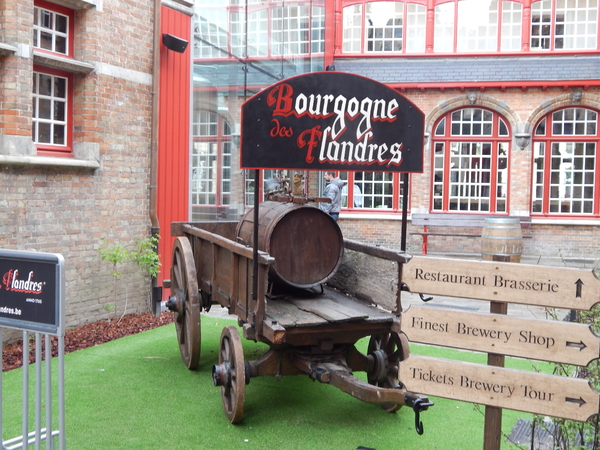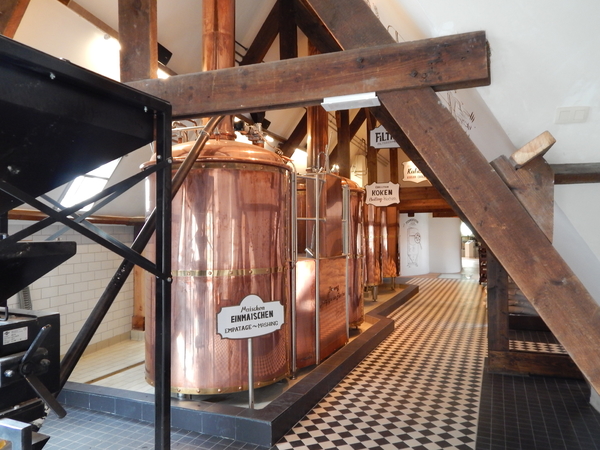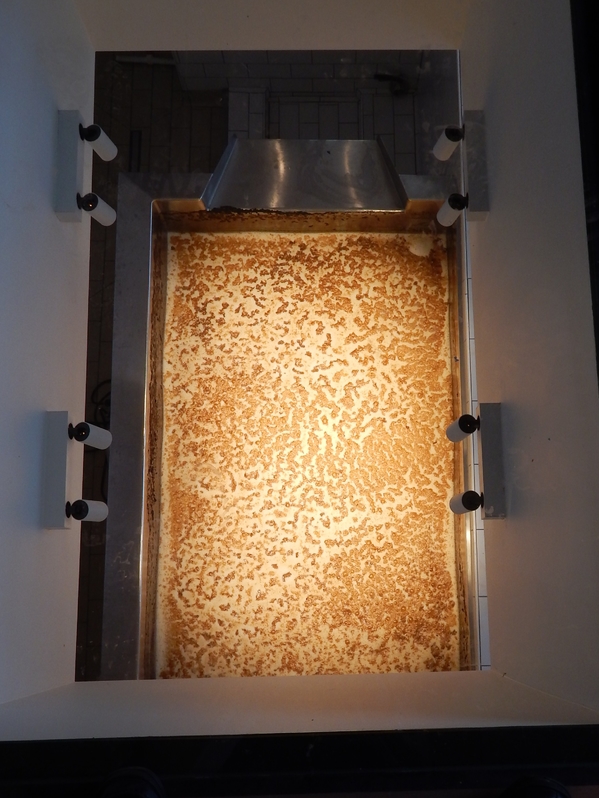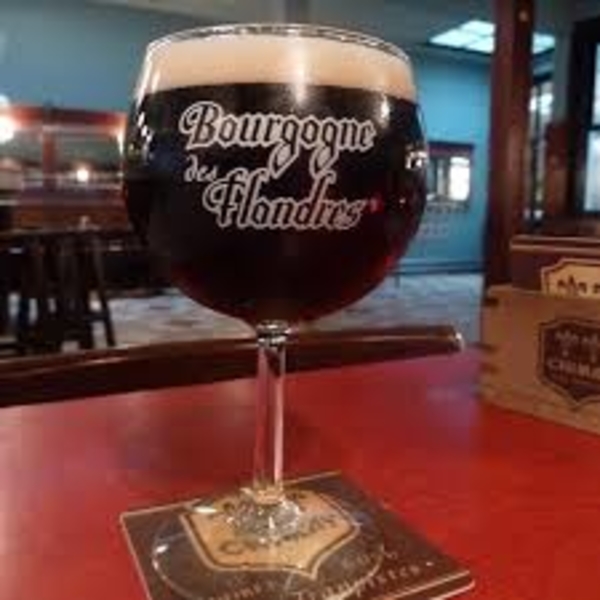Historic Flemish beer restored to Bruges
Added: Saturday, April 30th 2016

When Anthony Martin planned to build a brewery in Bruges, he was determined to have open fermenters to make strong brown ale in the traditional Flemish manner. But open vessels are hard to come by these days: manufacturers concentrate on modern enclosed tanks and brewers are under pressure to control the escape of carbon dioxide created during fermentation.
But when Anthony visited the company that was building his new brewing kit he was delighted to find two open square vessels. There was one small problem: they were used to house goldfish.
“You can’t possibly use those,” he was told. “Oh yes I can!” he replied firmly, bought them and installed them in the site close to Bruges’ famous Belfry and market square. The two vessels, open to public view, are packed with fermenting beer, topped by a thick head of yeast.
The beer that finally emerges has restored a famous Bruges’ speciality called Bourgogne des Flandres. That translates as Flemish Burgundy and it underlines the long and complicated history of the Low Countries, with its many invaders, where the use of the term Burgundian indicates a love of good food and drink.
Anthony Martin is the grandson of John Martin, who moved from Newmarket in England to Antwerp in 1909 and opened an import business to bring Guinness Stout, Bass Pale Ale and Gordon’s Scotch to the Belgian market. The business thrived. John Martin’s Pale Ale, brewed by Palm, has become a leading local beer and new brands have been added following the acquisition in 1993 of Timmermans at Itterbeek, the country’s oldest lambic brewer.

In the 1990s, John Martins bought the rights to brew and market Bourgogne des Flandres, which had a powerful link to Timmermans as the beer is a blend of that brewery’s lambic and a brown ale that originated in Bruges. The beer dates from the early 20th century and received a trademark in 1911. It was brewed by the Van Houtryve family that owned three plants in and around Bruges, including Den Oss, the Ox, founded in 1825 and close to the site of the new brewery.
Jean van Houtryve developed the beer, buying lambic from the Belgian area to blend with his brown ale. Lambic is an ancient style made by wild or “spontaneous” fermentation. Instead of using conventional yeast cultures, lambic brewers allow spores in the atmosphere to begin the transformation of malt and hops into beer. The beer is then aged in large wooden vessels where further yeasts and friendly bacteria locked in the wood continue fermentation. The finished beer is acidic, tart and wonderfully refreshing.
The Van Houtryve family continued to make Bourgogne des Flandres in Bruges until the 1950s. At one time there were some 34 breweries in the city but they disappeared rapidly following World War Two. The rise in popularity of Pils sent big lager brewers such as Stella Artois on the takeover trail, buying and closing independent producers in order to soak up the bars they supplied.

Bourgogne des Flandres wasn’t lost. The brown ale was produced by several different breweries until ownership passed to Anthony Martin. He said: “The Bruges Belfry is on the label so the beer must be brewed in Bruges” and he set about the task of building a new site. It’s in handsome brick buildings dating from 1903 and set around a large cobbled courtyard.
Brewing takes place in attractive copper vessels. In the Belgian farmhouse tradition – and the van Houtryve family began brewing on a farm – the mashing vessel doubles as the boiling kettle. Following the mash, the wort or sugary extract is filtered then returns to the mash vessel for the boil with hops.
Head brewer Thomas Vandelanotte said he uses the Styrian Goldings variety, in both whole flower and pellet form. The beer is not dry hopped – which means adding additional hops to the finished beer – as too much bitterness would clash with lambic, which uses aged hops with little bitter character.
Thomas says the local water is extremely hard – “you need a knife and fork to eat it!” – and is softened prior to brewing. The grains used are pale, lager and malted wheat, with roasted barley. After mashing and boiling, the hopped wort flows down to the two open fermenters (above). Thomas and second brewer Edward Martin, Anthony’s son, blend two batches from one vessel and back to ensure consistency of flavour and to keep the yeast active..
Intriguingly, the yeast culture originally came from England, though nobody is certain from which brewery. But as John Martin’s Pale Ale is based on an old Courage beer known as Bulldog, Anthony Martin thinks the yeast may have originated in the former Simmonds Brewery in Reading, which became part of the Courage group.
Fermentation in the open squares lasts for four to five days. The beer is then pumped across the courtyard to closed tanks for final fermentation and maturation. The beer is blended at a ratio of 50:50 with lambic trunked from Timmermans in Itterbeek.
The 5% beer is not aged – though the lambic has been stored in wood for at least a year – but Thomas Vandelanotte says they may do aged versions for special occasions in the future.
At present he is brewing five to six times a week on the 10 hectolitre plant, producing around 3,000 hectos a year but this may increase to keep up with demand.
As well as the local market, Anthony Martin says there’s “huge demand” for Bourgogne des Flandres in Russia, especially in Moscow and St Petersburg. The beer is also exported to the United States and Anthony is looking at the possibility of selling it in Italy and Spain.
The luscious russet/ruby red beer has some acidity on nose and palate from the lambic, balanced by roasted grain, port wine fruitiness and a creamy note from the wheat malt. The finish is tart, acidic with rich fruit and a late hint of spicy hops.
The brewery is open for tours, which begins with a reconstruction of the brewer’s house from the van Houtryve period. Good food can be enjoyed with beer in a bistro while the brewery shop offers the full range of John Martins’ beers and other merchandise.
But no goldfish.
*Brouwerij Bourgogne des Flandres, Kartuizerinnenstraat, off Wollestraat, Bruges/Brugge 8000. Tours 10-6, 10 euro. www.bourgognedesflandres.be






